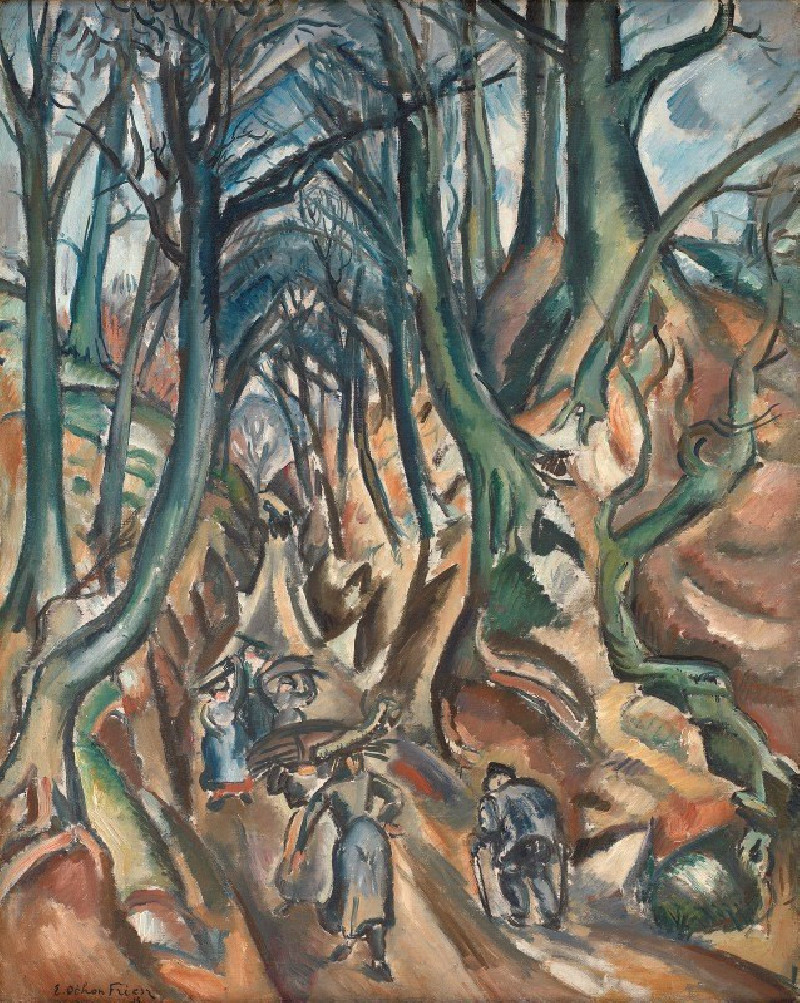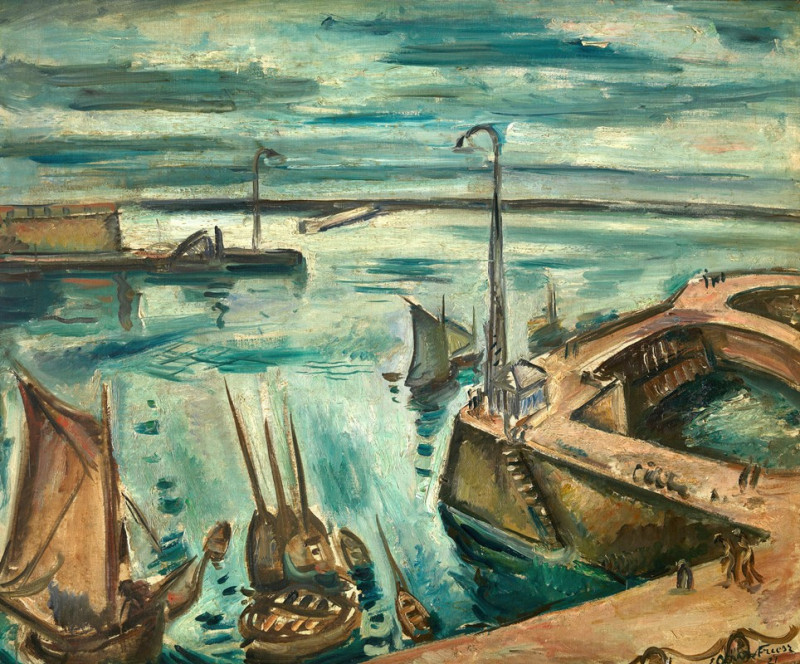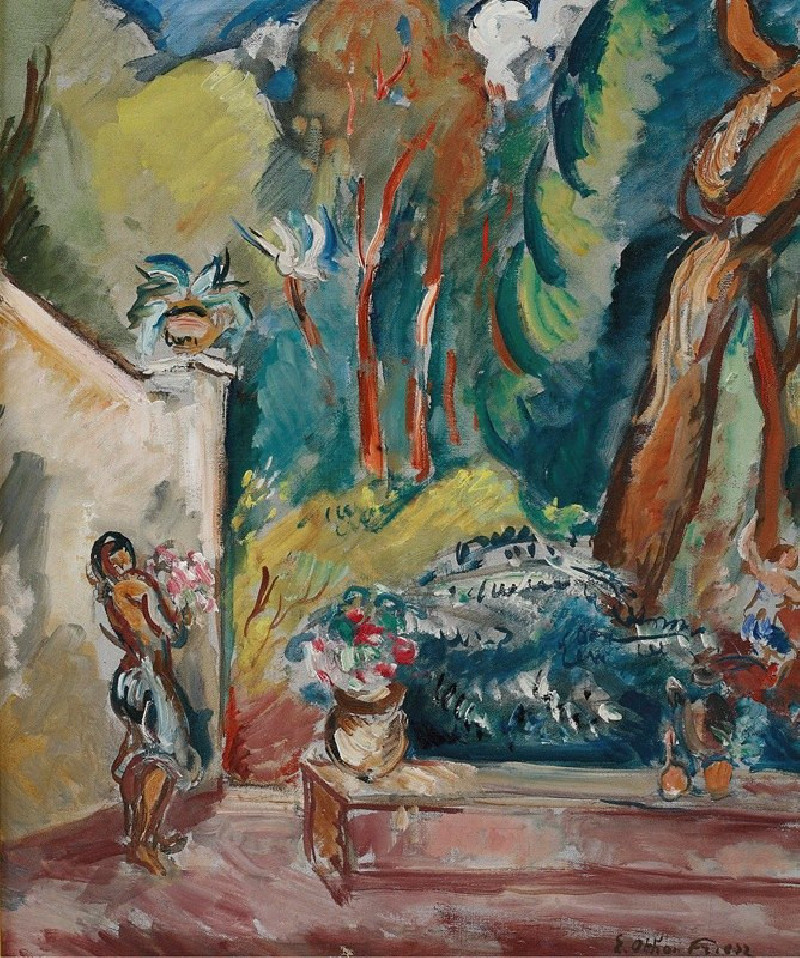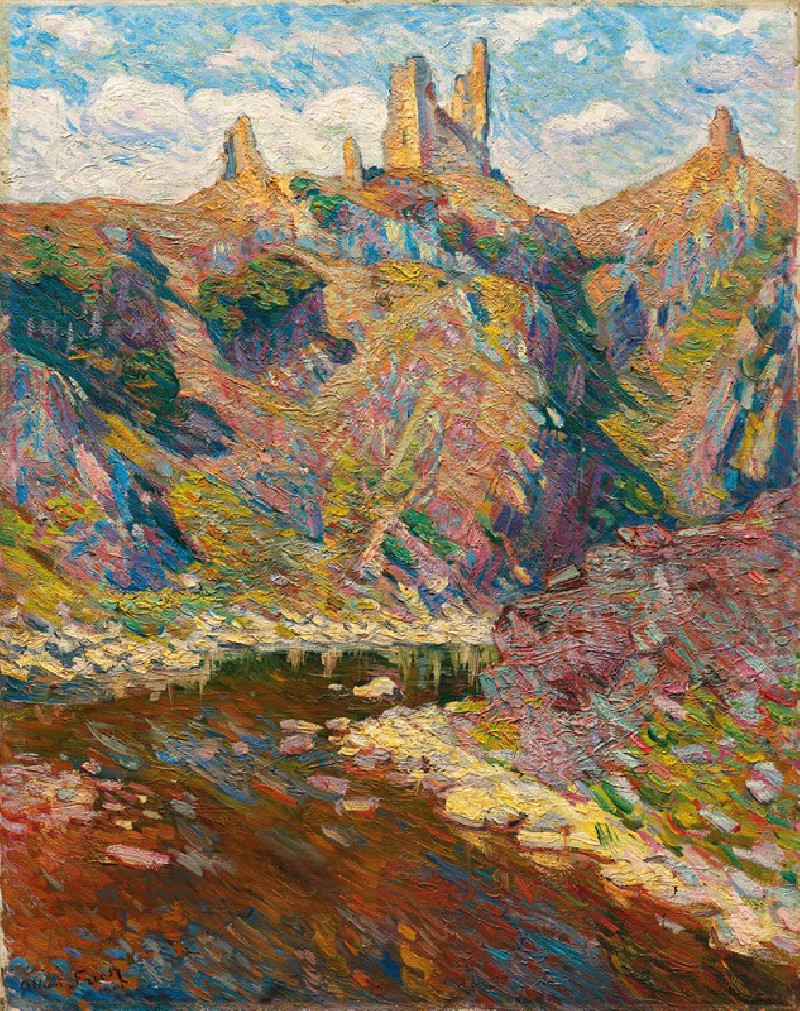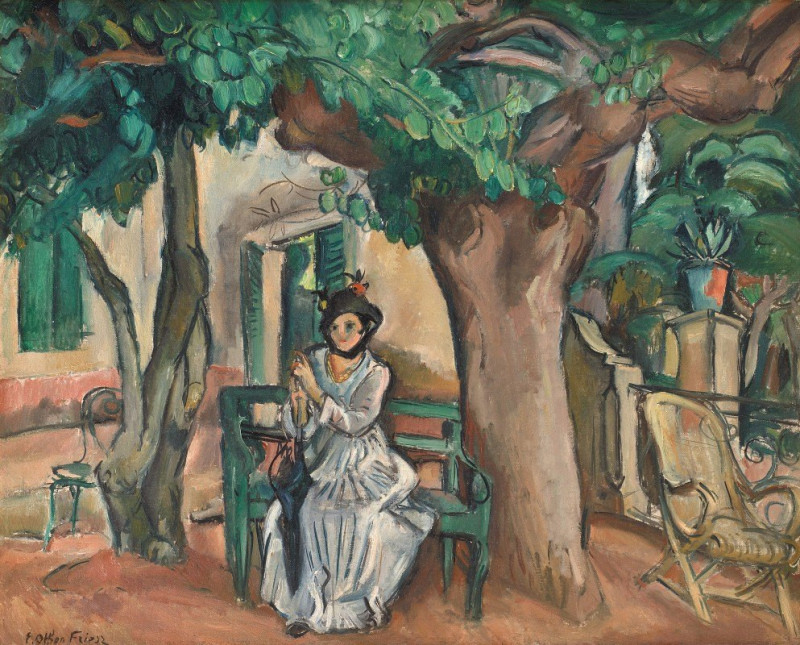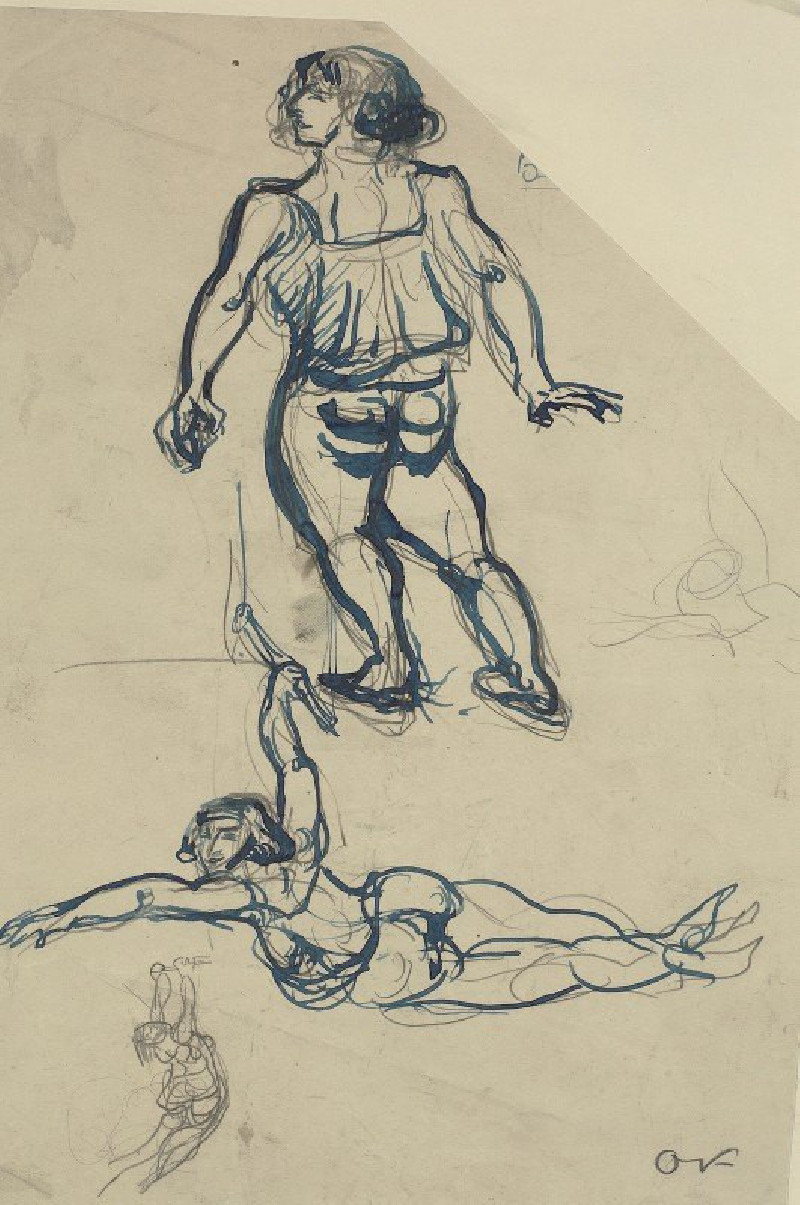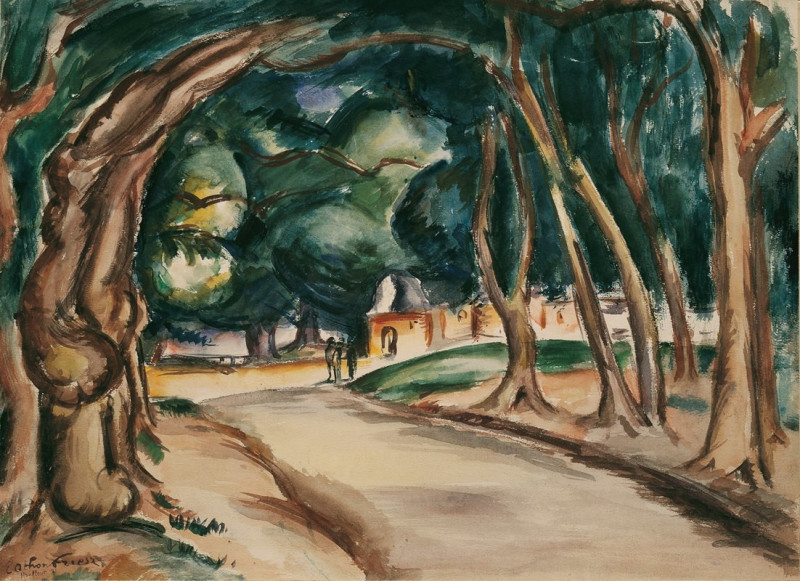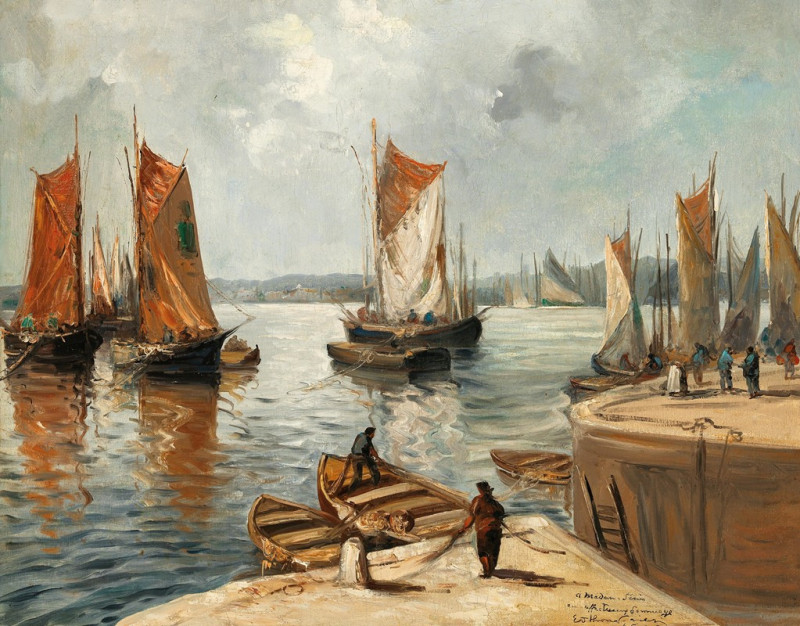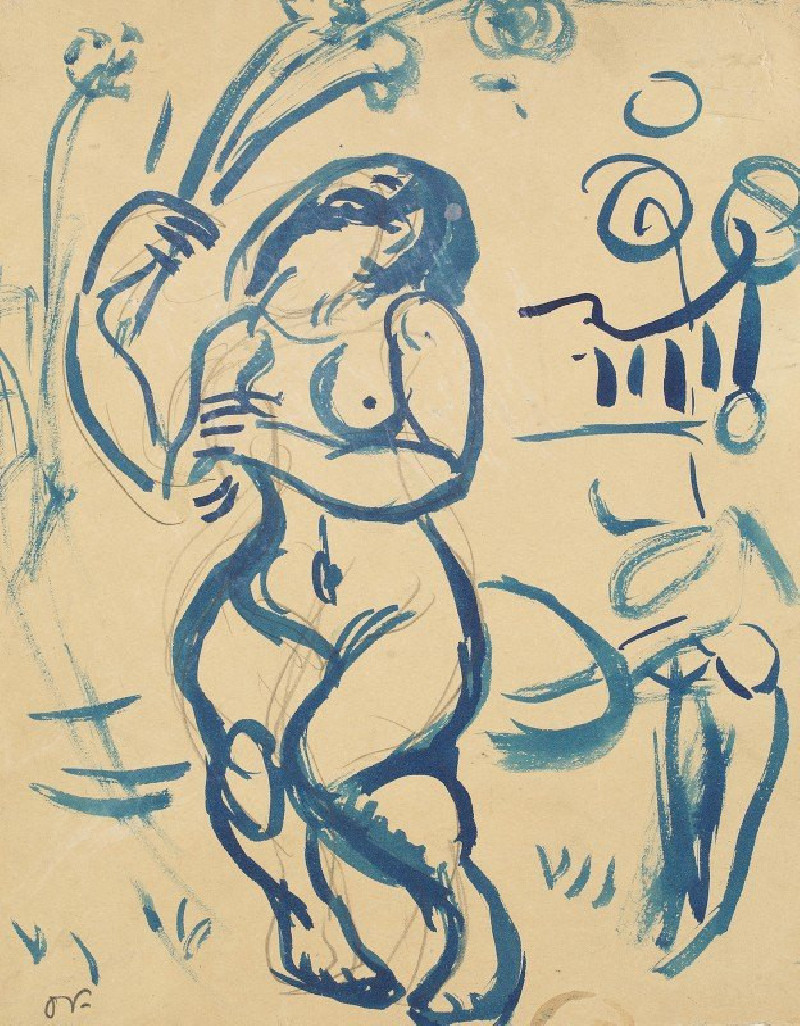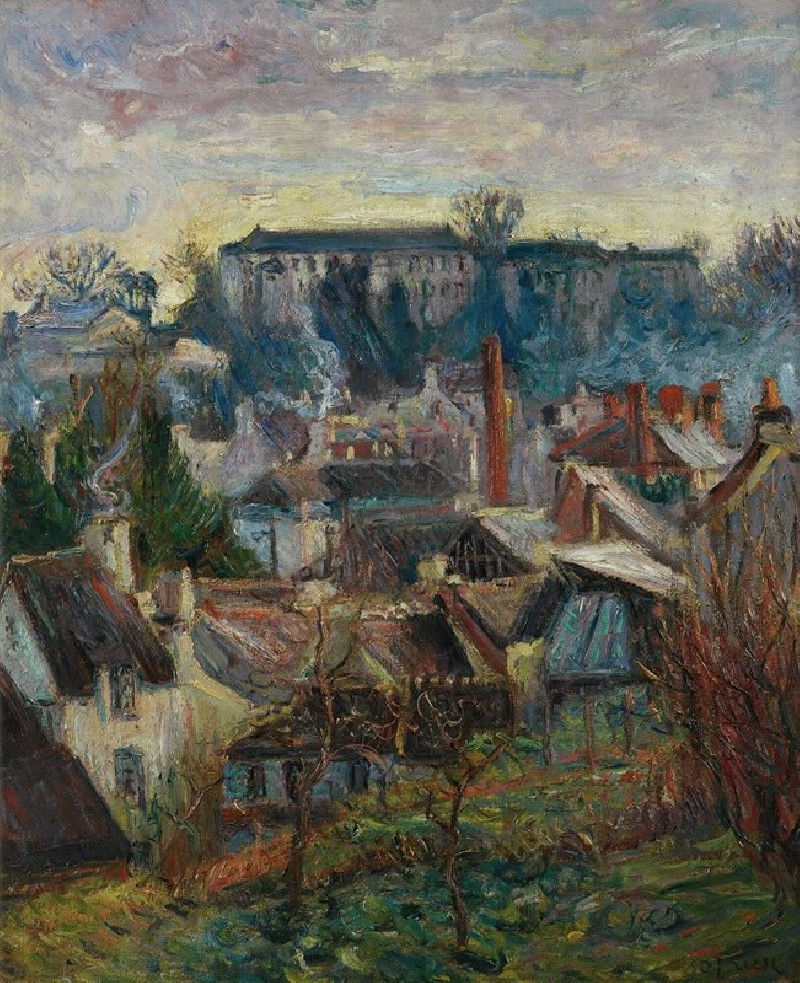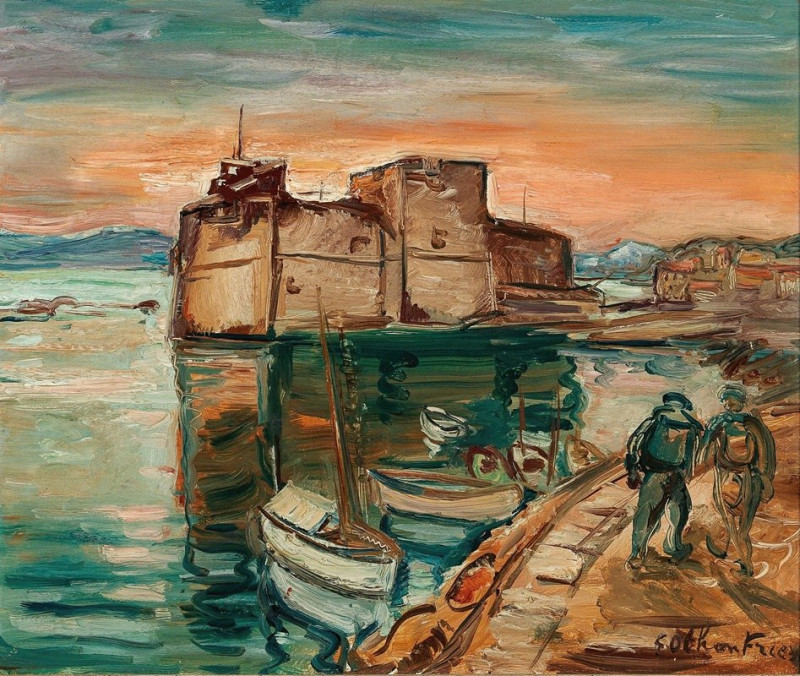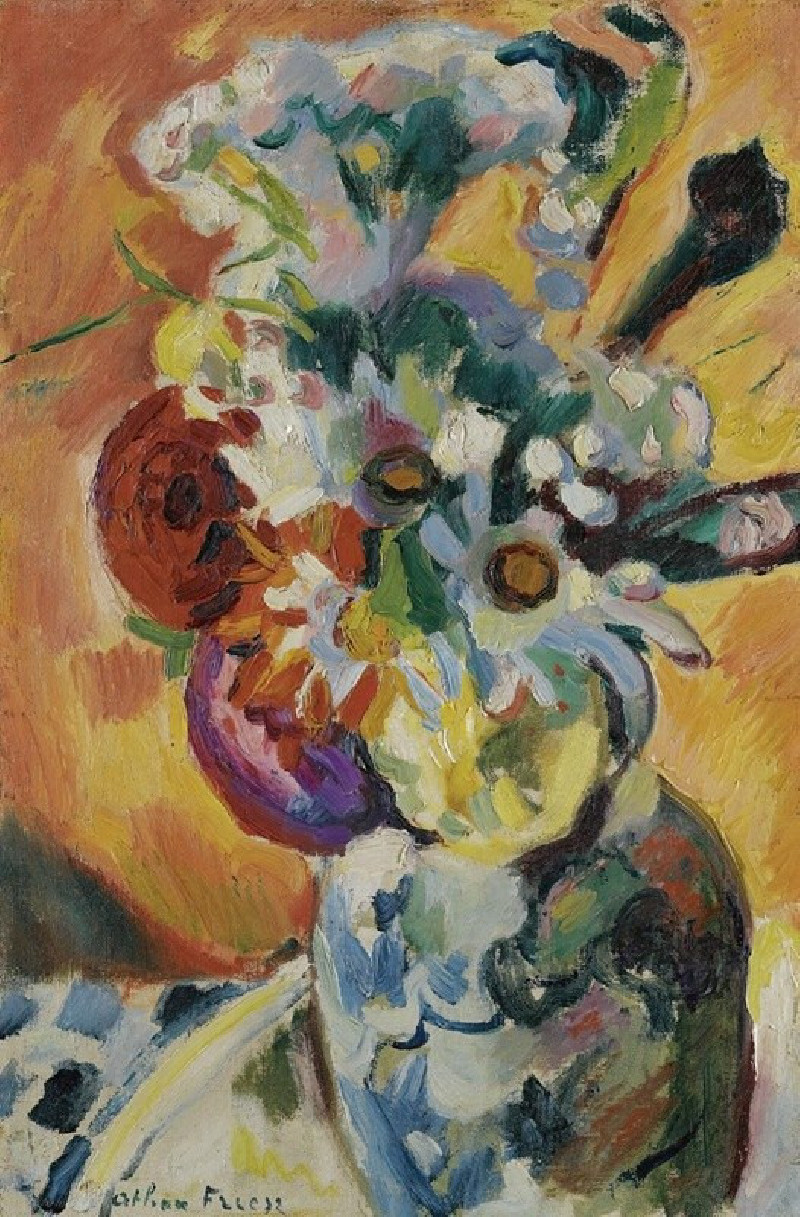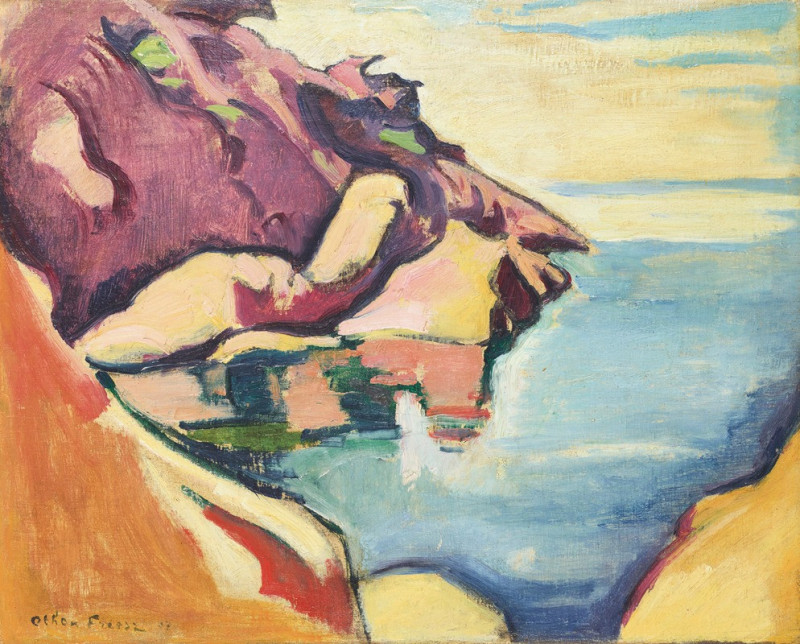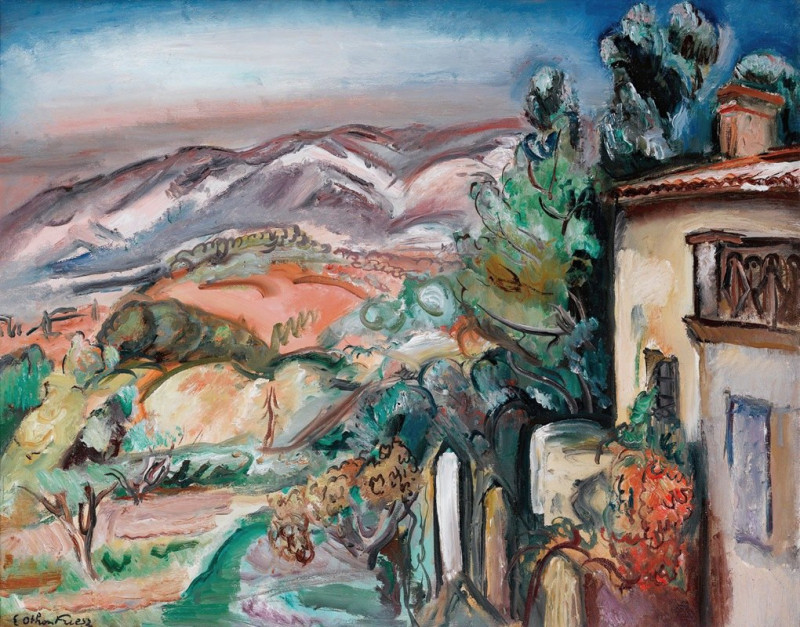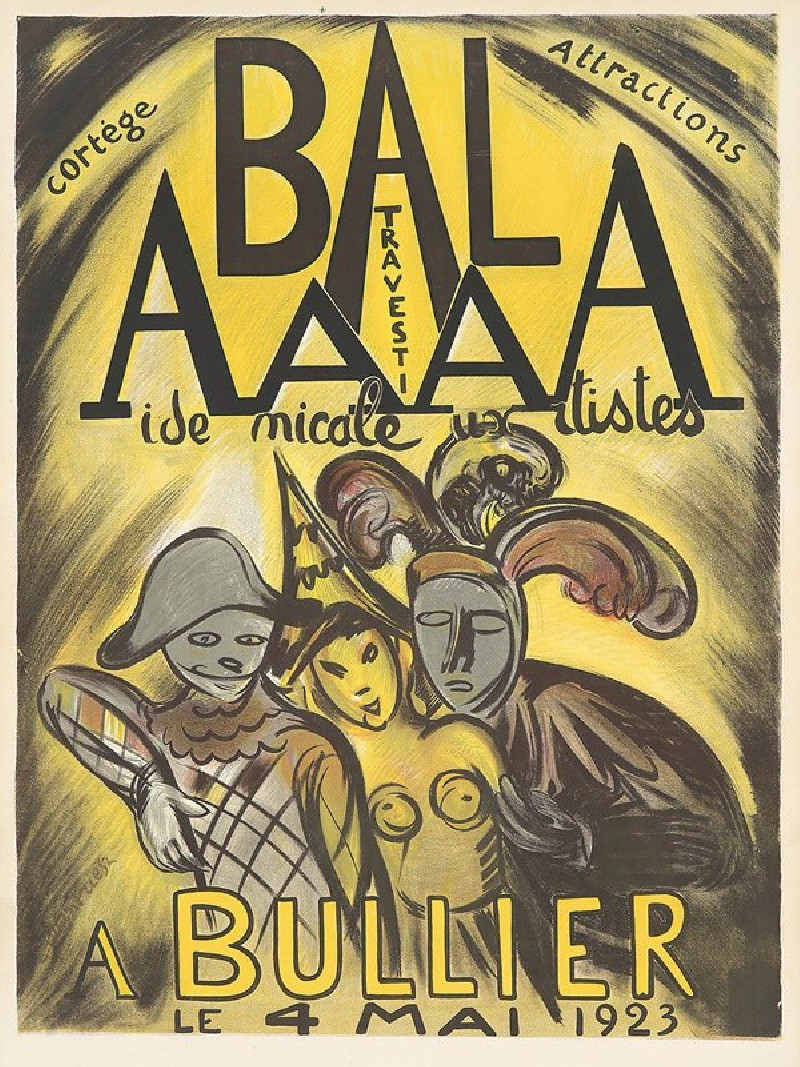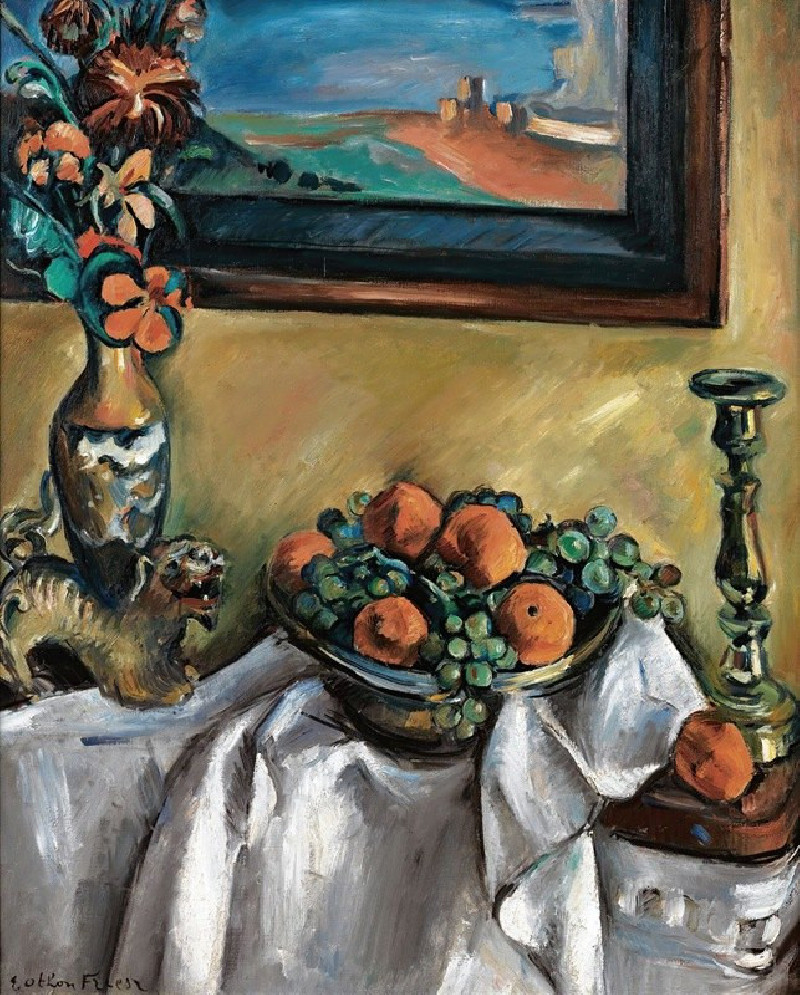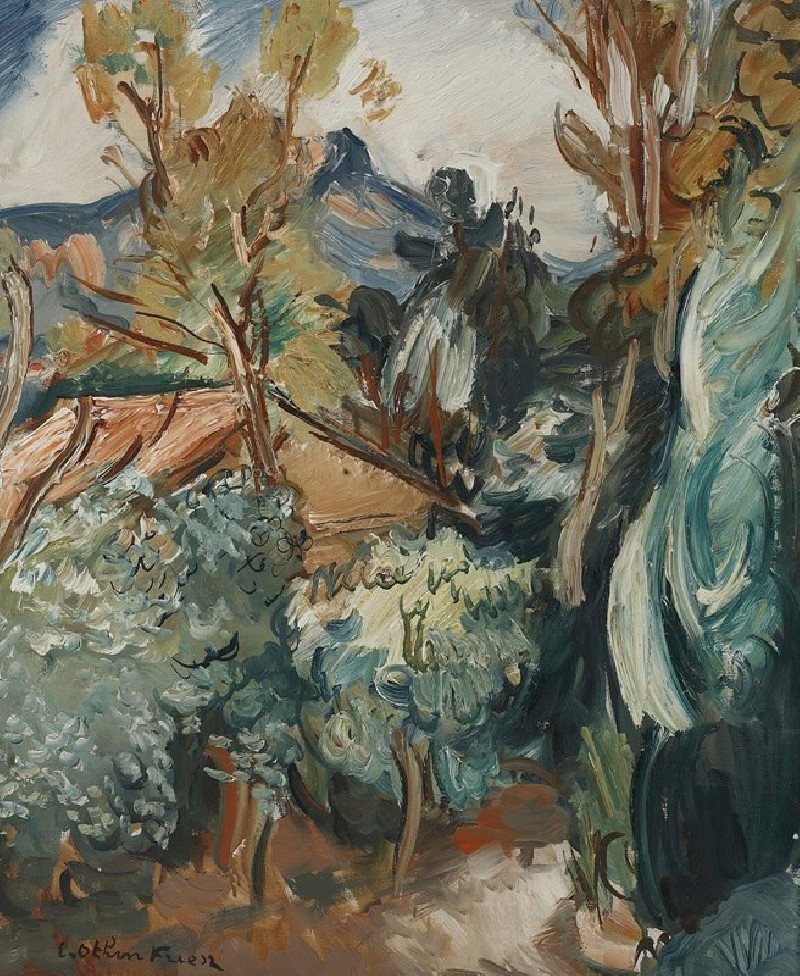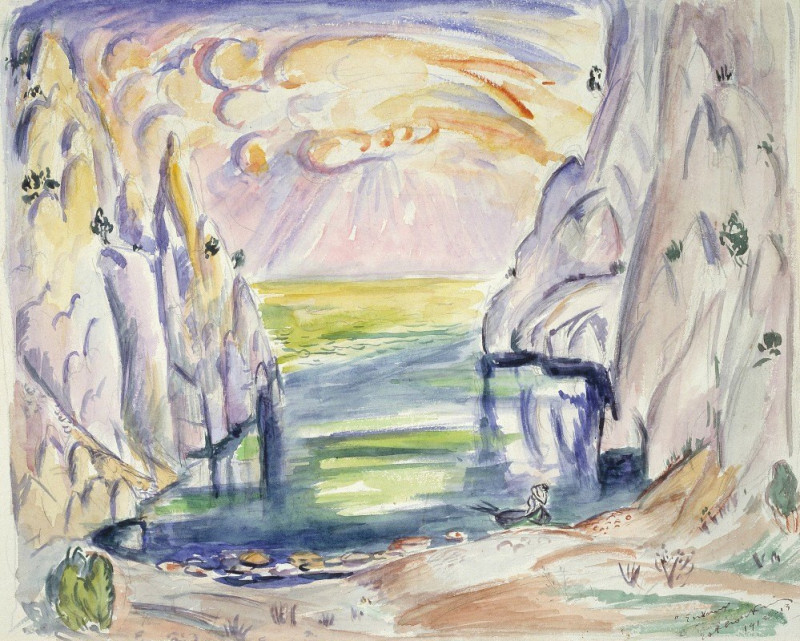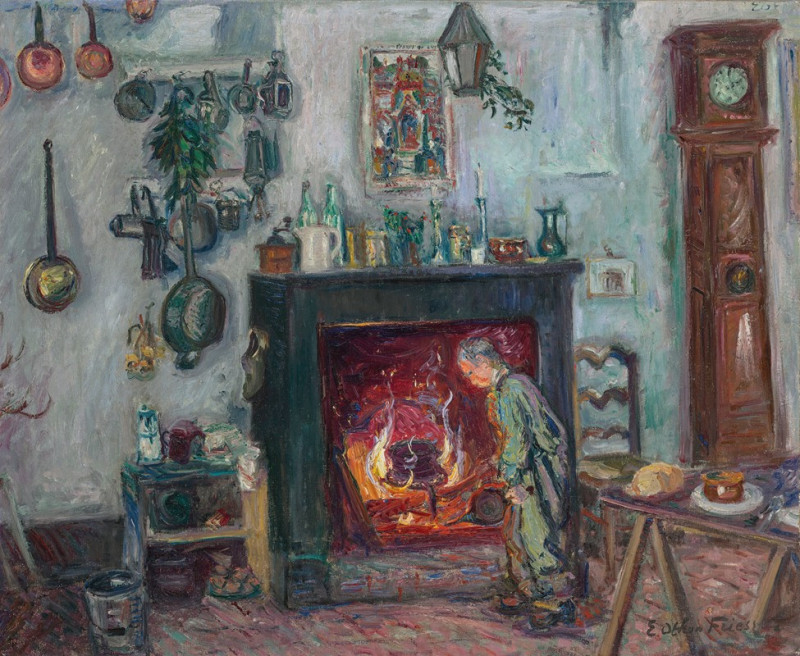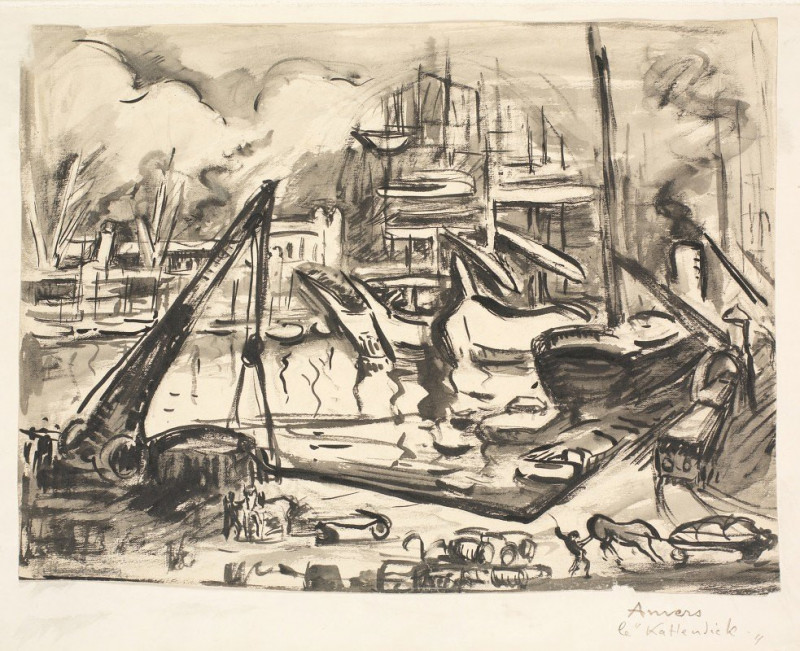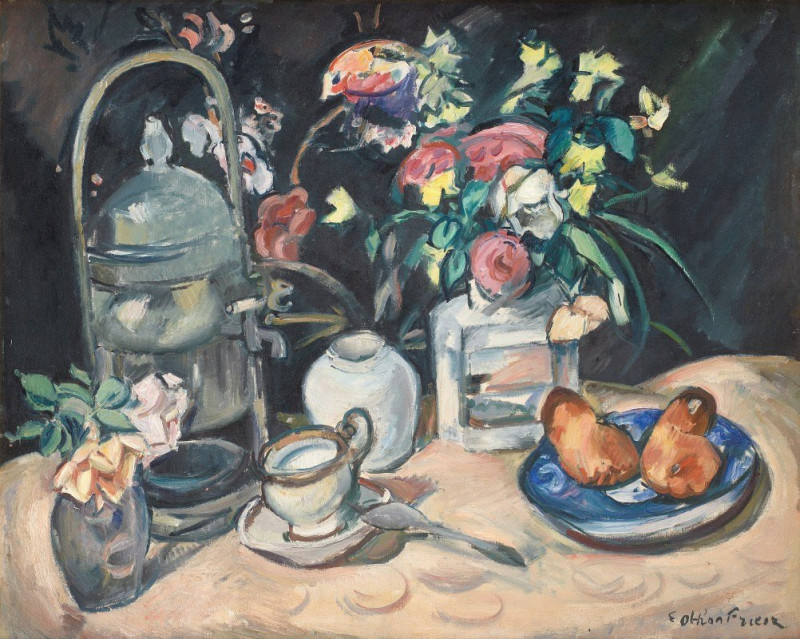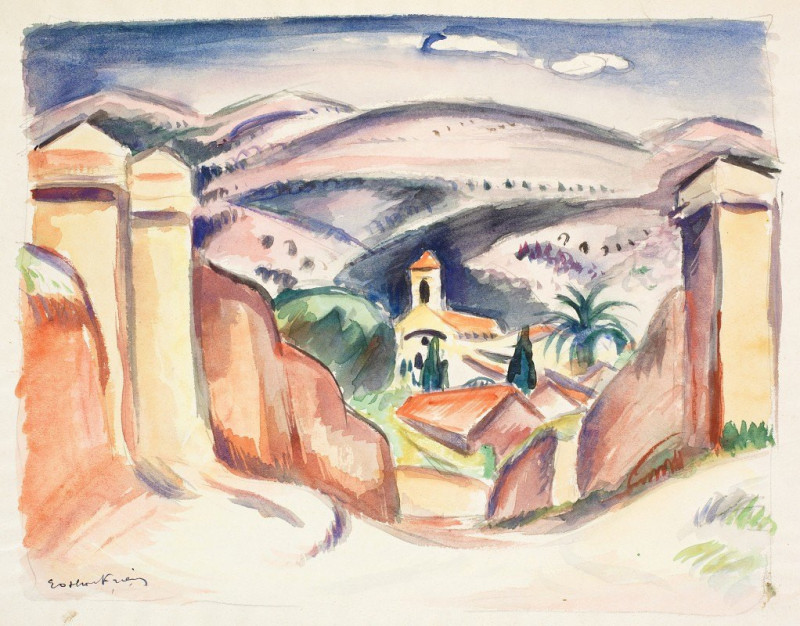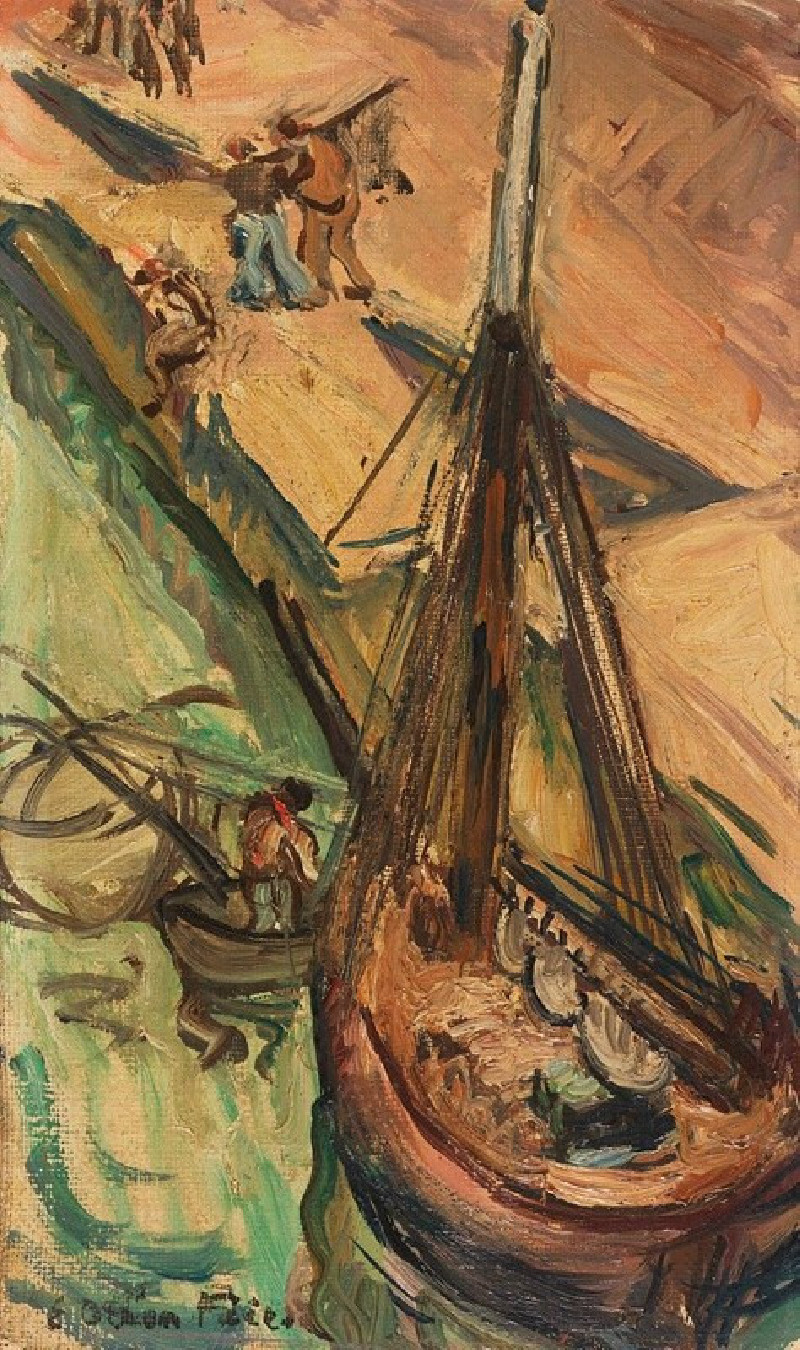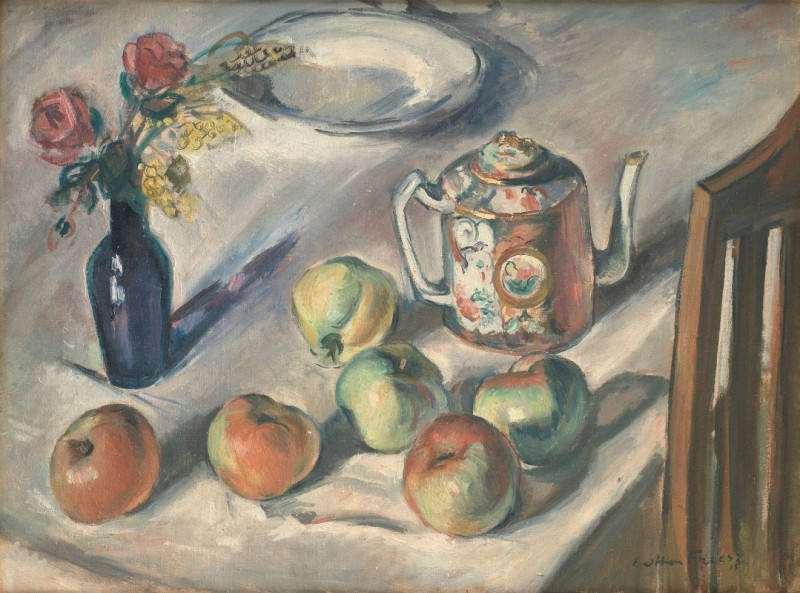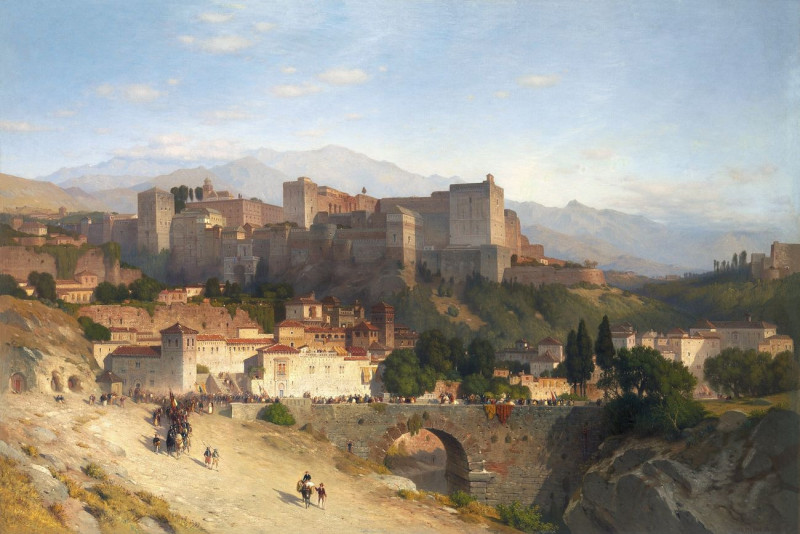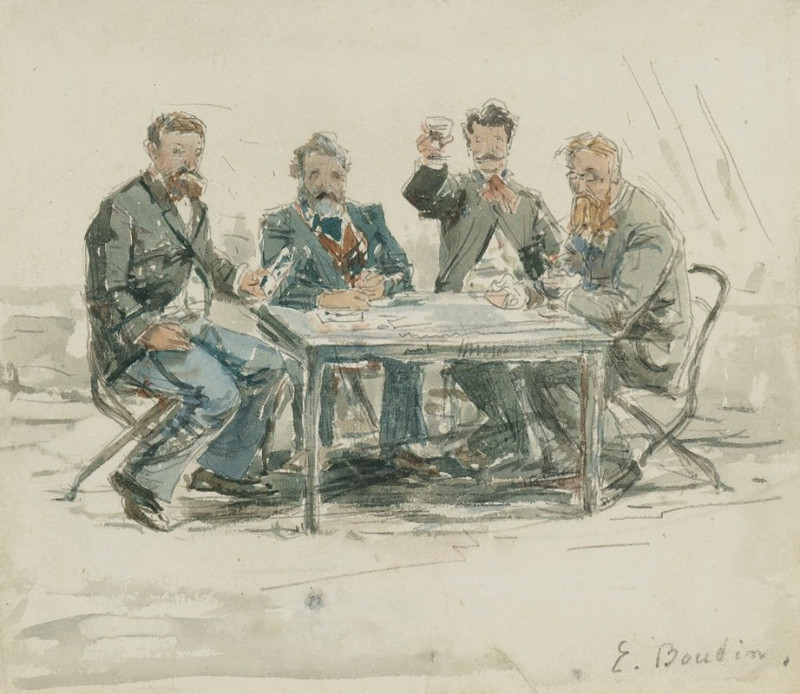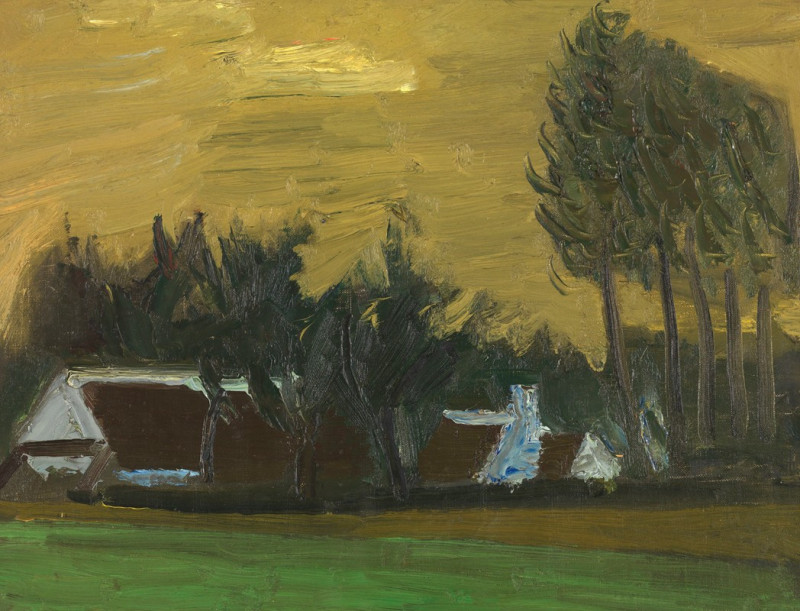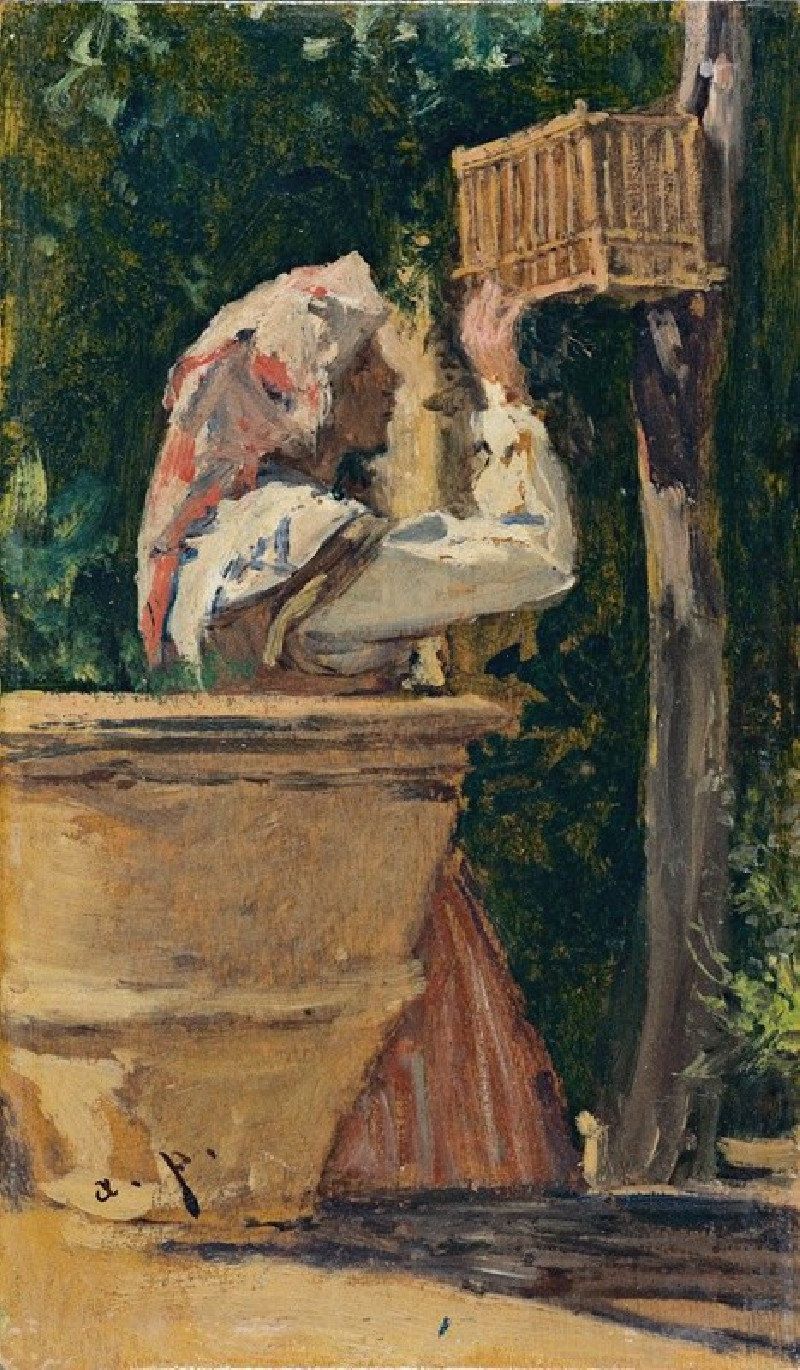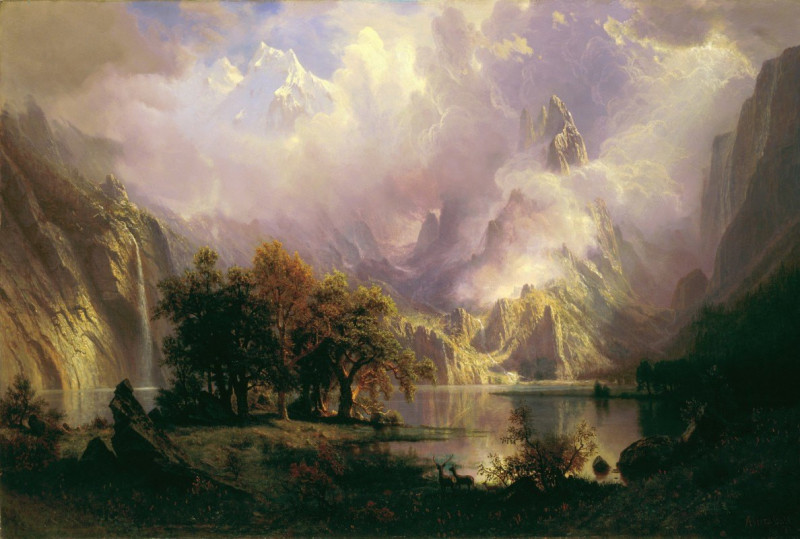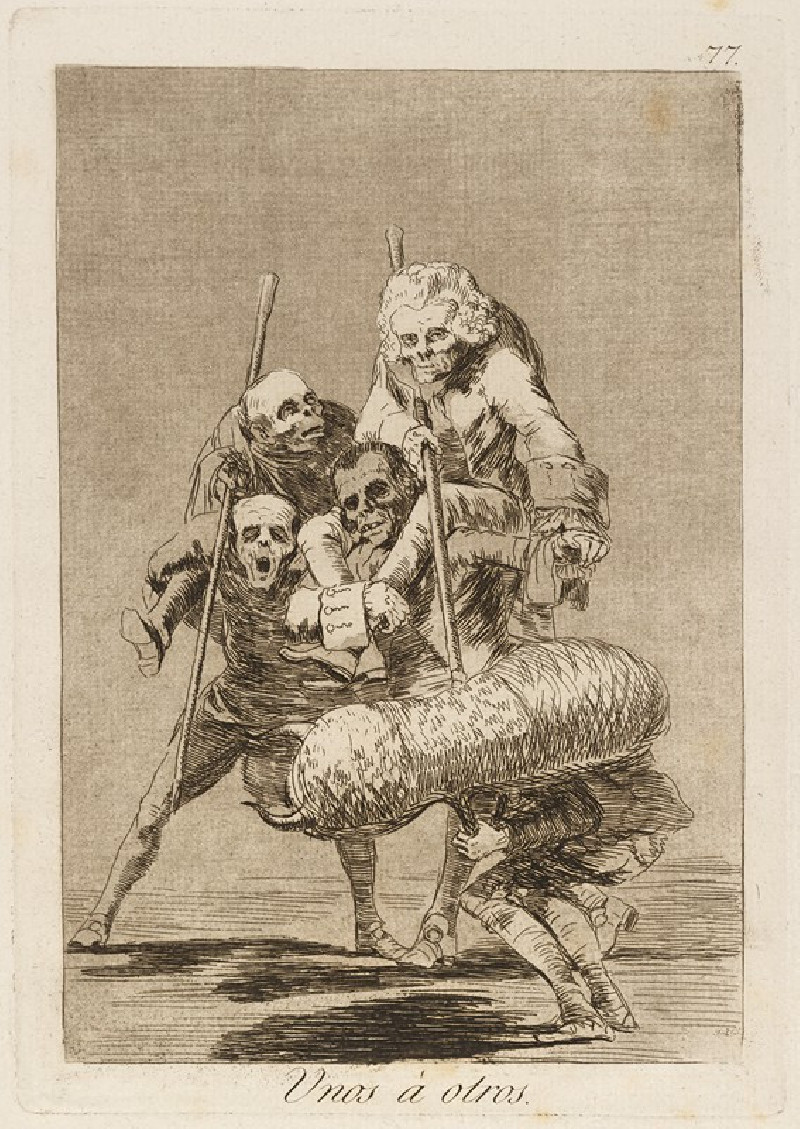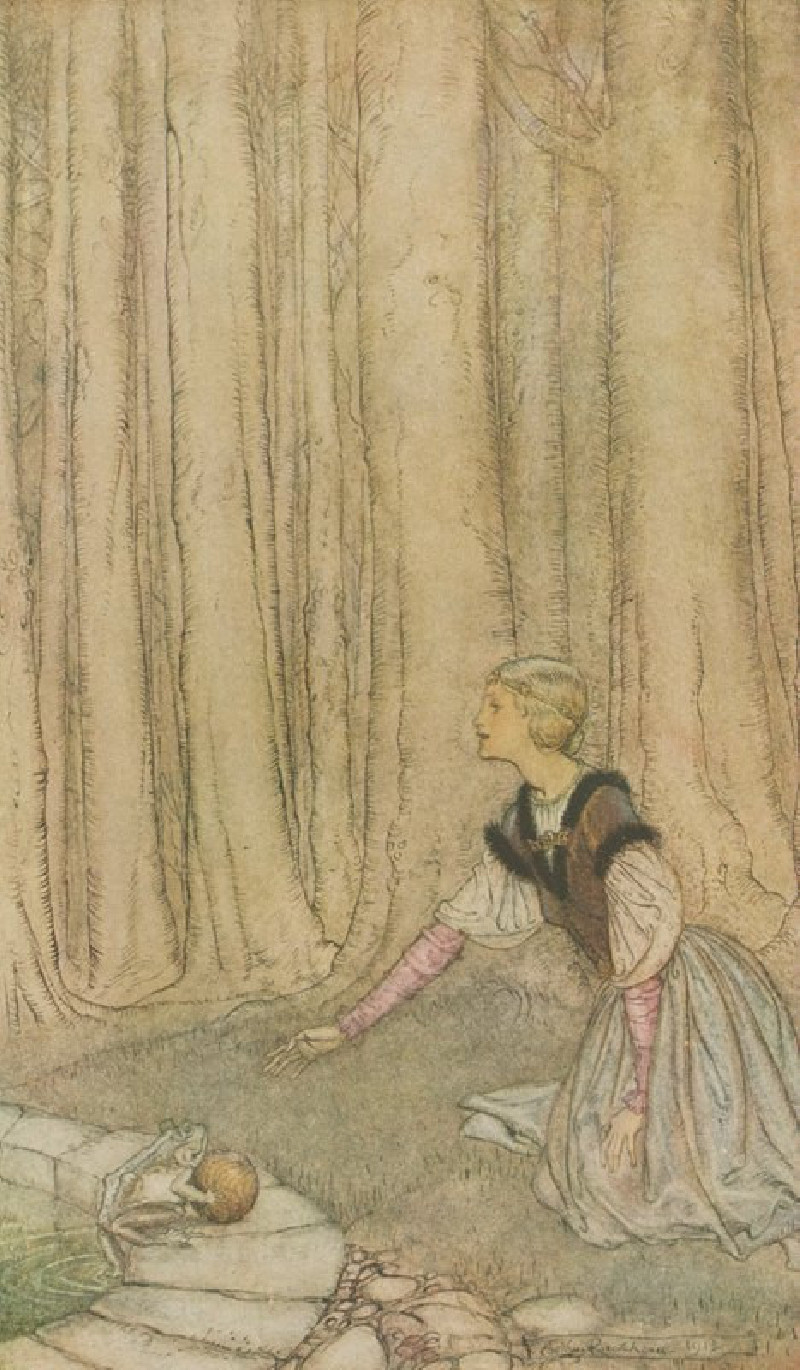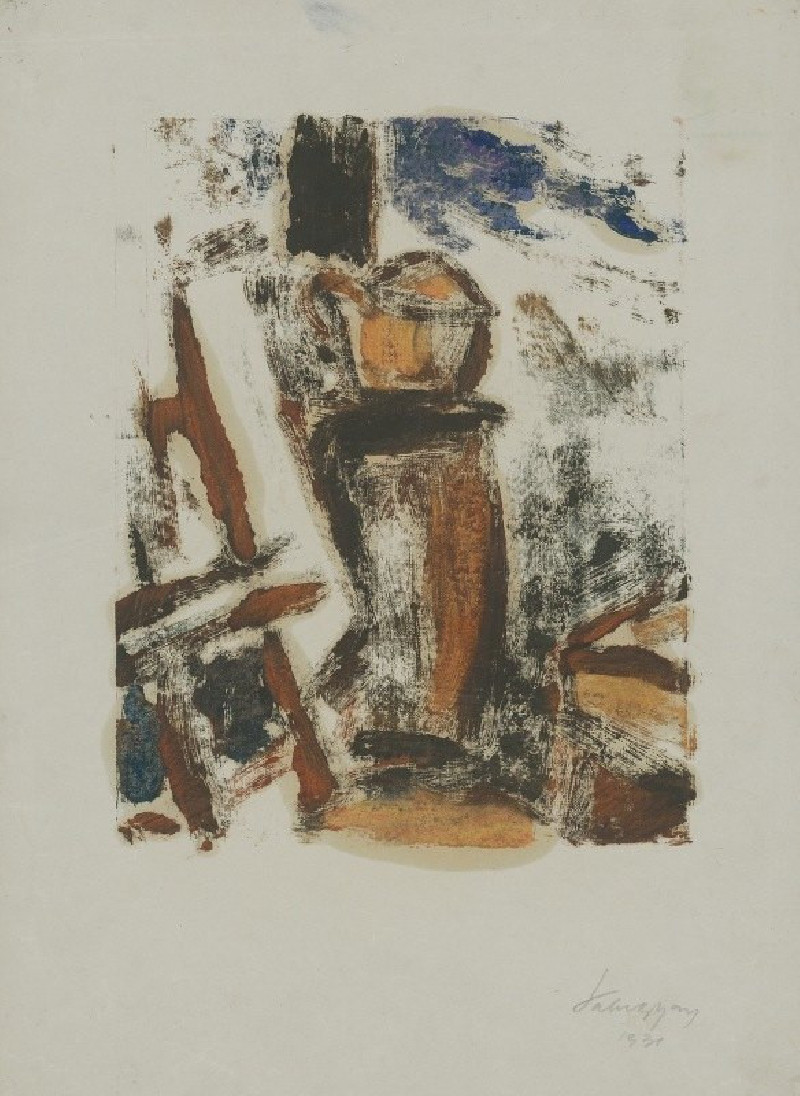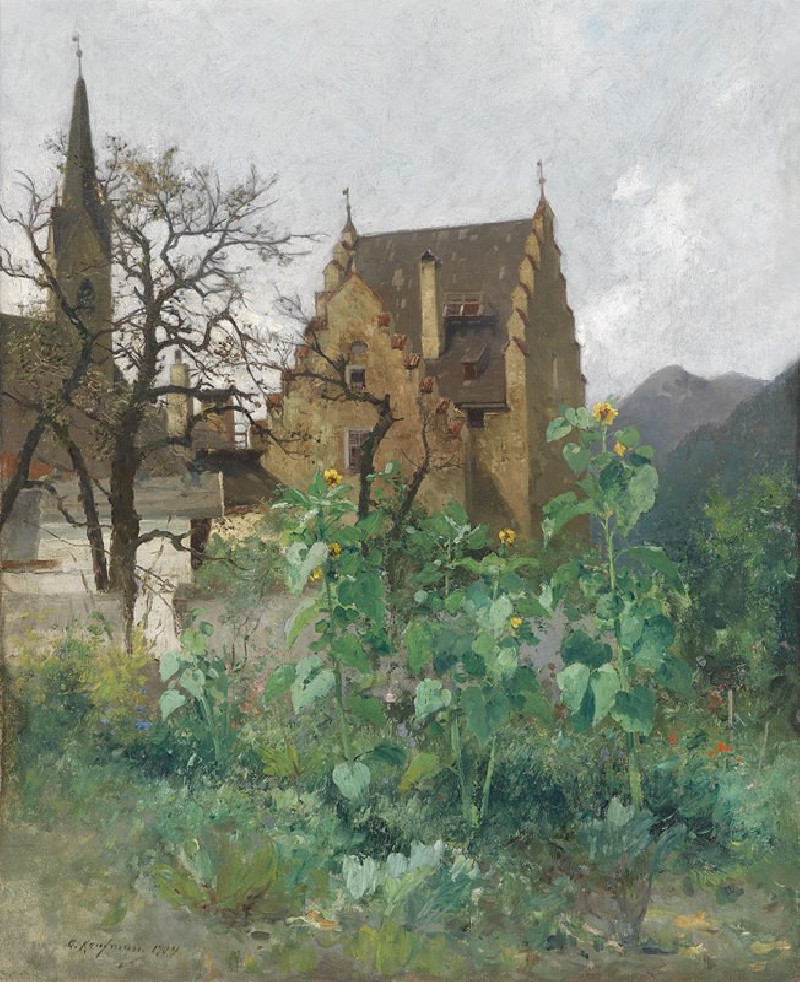The Sunken Road in Winter (1913)
Technique: Giclée quality print
Recommended by our customers
More about this artwork
"The Sunken Road in Winter," painted by Emile Othon Friesz in 1913, captures a vivid and evocative scene of rustic life amid a winter landscape. This painting is an exemplary showcase of Friesz's distinctive approach to Fauvism, an artistic style known for its bold and striking use of color and assertive brushwork.In this dynamic composition, the artist depicts a sunken road, meandering through a forest of tall, leafless trees. The trees stretch upward with their branches intermingling, creating a network that suggests both confinement and protection. The road itself, enveloped by earthy tones of brown and gray, serves as a pathway for the figures within the painting.In the foreground, various characters navigate this chilly, undulating road. A woman in blue, a central figure, appears to be conversing or gesturing to someone out of view, while a man in somber hues trudges forward, bending against the cold wind. Another figure, slightly aloof, is seen farther back, contributing to the narrative of daily life and human perseverance in rural settings.The choice of colors—muted yet contrasting—along with the dramatic lines and forms, evoke the chill of winter, yet suggest the warmth of human activity and togetherness. Friesz’s technique breathes life and motion into the scene, making the viewer almost feel the crispness of the air and the rugged texture of the landscape."The Sunken Road in Winter" is not just a visual representation but an emotional journey, inviting viewers to reflect on nature’s cycles and the enduring spirit of humans living in harmony with their surroundings.

